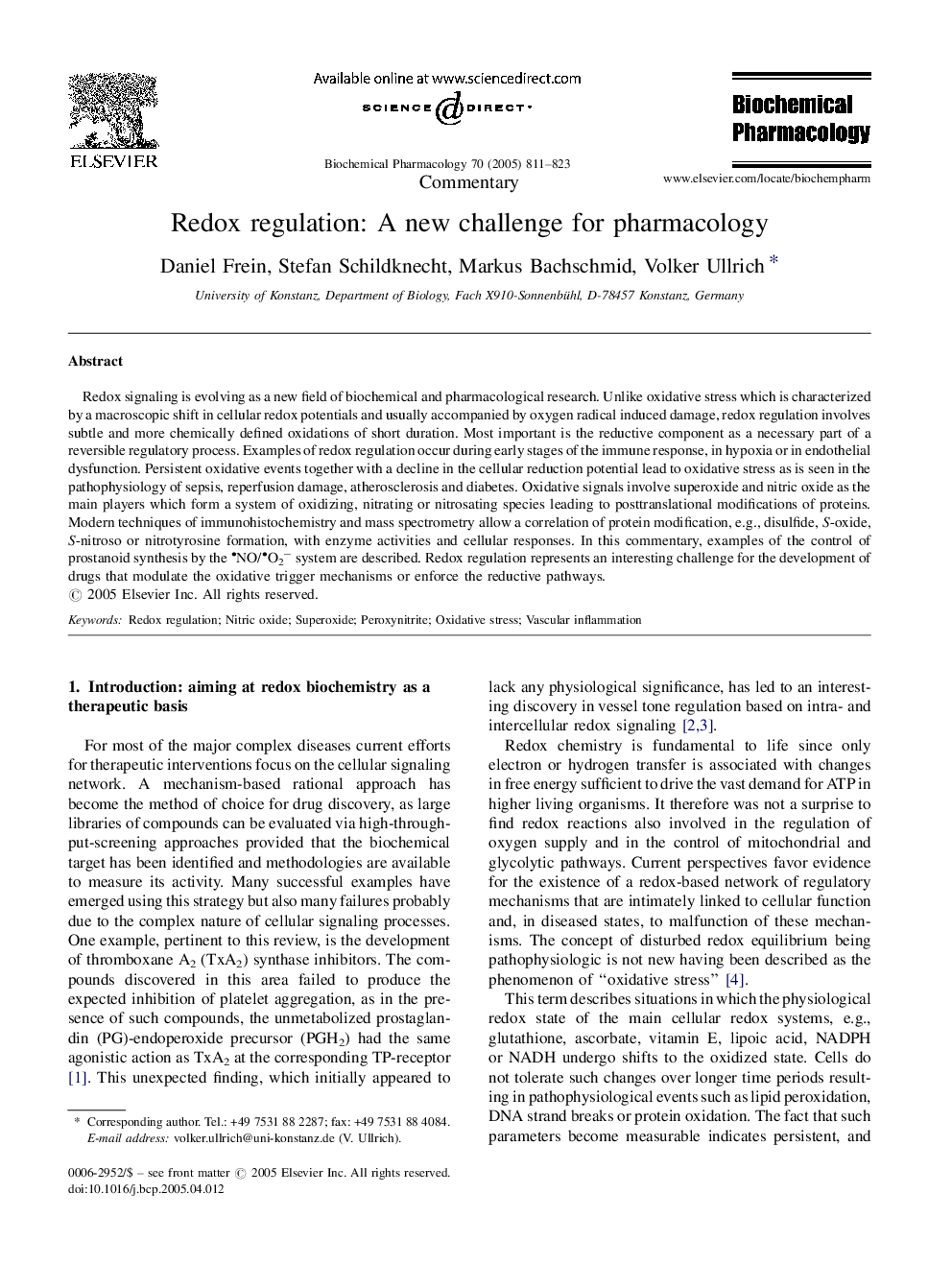| کد مقاله | کد نشریه | سال انتشار | مقاله انگلیسی | نسخه تمام متن |
|---|---|---|---|---|
| 9001546 | 1118532 | 2005 | 13 صفحه PDF | دانلود رایگان |
عنوان انگلیسی مقاله ISI
Redox regulation: A new challenge for pharmacology
دانلود مقاله + سفارش ترجمه
دانلود مقاله ISI انگلیسی
رایگان برای ایرانیان
کلمات کلیدی
موضوعات مرتبط
علوم پزشکی و سلامت
داروسازی، سم شناسی و علوم دارویی
داروشناسی
پیش نمایش صفحه اول مقاله

چکیده انگلیسی
Redox signaling is evolving as a new field of biochemical and pharmacological research. Unlike oxidative stress which is characterized by a macroscopic shift in cellular redox potentials and usually accompanied by oxygen radical induced damage, redox regulation involves subtle and more chemically defined oxidations of short duration. Most important is the reductive component as a necessary part of a reversible regulatory process. Examples of redox regulation occur during early stages of the immune response, in hypoxia or in endothelial dysfunction. Persistent oxidative events together with a decline in the cellular reduction potential lead to oxidative stress as is seen in the pathophysiology of sepsis, reperfusion damage, atherosclerosis and diabetes. Oxidative signals involve superoxide and nitric oxide as the main players which form a system of oxidizing, nitrating or nitrosating species leading to posttranslational modifications of proteins. Modern techniques of immunohistochemistry and mass spectrometry allow a correlation of protein modification, e.g., disulfide, S-oxide, S-nitroso or nitrotyrosine formation, with enzyme activities and cellular responses. In this commentary, examples of the control of prostanoid synthesis by the NO/O2â system are described. Redox regulation represents an interesting challenge for the development of drugs that modulate the oxidative trigger mechanisms or enforce the reductive pathways.
ناشر
Database: Elsevier - ScienceDirect (ساینس دایرکت)
Journal: Biochemical Pharmacology - Volume 70, Issue 6, 15 September 2005, Pages 811-823
Journal: Biochemical Pharmacology - Volume 70, Issue 6, 15 September 2005, Pages 811-823
نویسندگان
Daniel Frein, Stefan Schildknecht, Markus Bachschmid, Volker Ullrich,